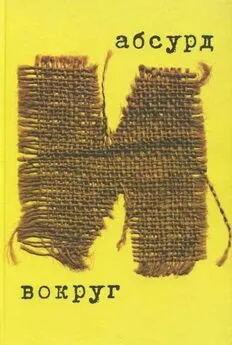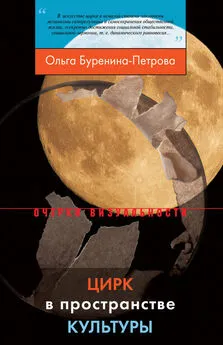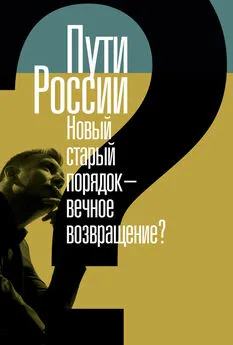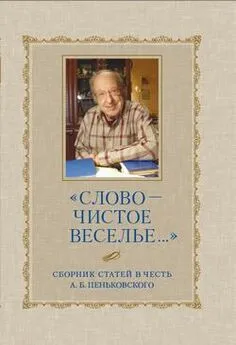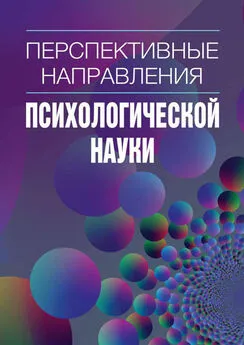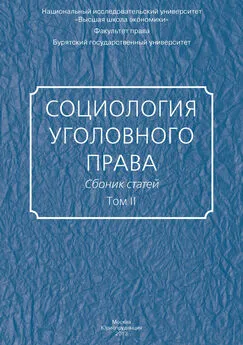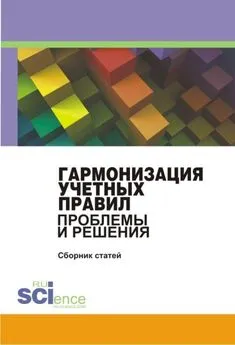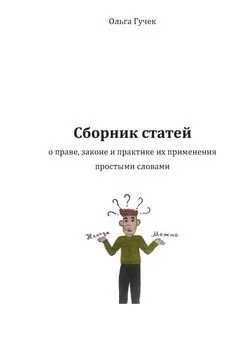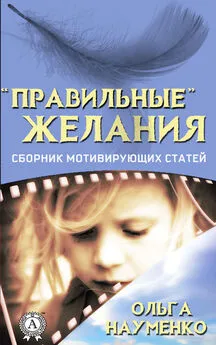Ольга Буренина - Абсурд и вокруг: сборник статей
- Название:Абсурд и вокруг: сборник статей
- Автор:
- Жанр:
- Издательство:Языки славянской культуры
- Год:2004
- Город:Москва
- ISBN:5-94457-198-5
- Рейтинг:
- Избранное:Добавить в избранное
-
Отзывы:
-
Ваша оценка:
Ольга Буренина - Абсурд и вокруг: сборник статей краткое содержание
Содержание сборника отражает программу международной конференции «Абсурд и славянская культура XX в», которая состоялась в октябре 2001 г в Цюрихском университете, объединив представителей самых разных научных дисциплин. Одна из главных задач сборника — на фоне современного теоретического дискурса об абсурде описать феномен абсурда (мировоззренческий, логический, художественный) в культуре XX в., показать его междискурсивный и межкультурный характер. В связи с этим выбранное нами название «Абсурд и вокруг» — в некоторой степени и полемическая отсылка к коллективному труду «Around the Absurd: Essays on Modem and Postmodern Drama», авторы и составители которого ограничивали понимание абсурда лишь сферой театрального искусства.
Сборник рассчитан на специалистов по литературоведению, философии, искусствоведению и теории культуры, а также на более широкий круг читателей, интересующихся вопросами абсурда в культуре.
Абсурд и вокруг: сборник статей - читать онлайн бесплатно полную версию (весь текст целиком)
Интервал:
Закладка:
209
Манн 1966:17, 23.
210
Например, Jaccard 1991.
211
Например, Маркенштейн 1996.
212
См., например: Foster 1967; Clark 1991, особ. с. 60–61, и др.
213
Беляев, Новикова, Толстых 1989:5, 69.
214
См. Gagnevin 1978: 102–103.
215
Hansen-Löve 1989: 17–22.
216
См. Smirnov 1988:707.
217
Об этом см., например, Сигей 1996.
218
См. об этом периоде Zveteremich 1980.
219
О функции гротескных форм в скульптуре, архитектуре, живописи после Ренессанса см., например: Castellani 1991; Pedroccio 2000, etc
220
О гротеске в научной фантастике см., например, Starr 1999.
221
См., например, Kühnel 1949.
222
Hansen-Löve 1978: 206.
223
Мейерхольд, Коренев 1927:79.
224
Луначарский 1981: 138.
225
Блюм 1930а, б.
226
Луначарский 1967: 537–538.
227
3. Е., Р. Ш. 1930:36.
228
Зивельчинская 1931: 89–90.
229
См., например, Брик 1927.
230
См., например, Ефимов 1953:484.
231
См., например, Петров, Ковалев и др. 1954: 56.
232
Горбатов 1949: 225.
233
Евнина 1948: 26.
234
Jewnina 1950.
235
См.: Отчетный доклад XIX Съезду партии… (Правда. 6 окт. 1952; также в сб.: О партийной и советской печати: Сб. документов. М., 1954. С. 635).
236
Недошивин 1953:218.
237
См. Эльяшевич 1975.
238
Kayser 1957; Barasch 1971; Iehl 1997.
239
Gryclevicz 1984; Kuruluk 1987.
240
См., например, Molinari 2000.
241
Критику этой оппозиции с точки зрения исследователя средневекового искусства маргиналий см. в Camille 1997:18; с точки зрения исследователя орнаментальных гротесков: Morel 1997.
242
Пинский 1961: 211–215.
243
Горбатов 1949: 221. См. Partridge 1956.
244
Shaftesbury 1995:137.
245
Shaftesbury 1993:165,298,348.
246
Sokól 1971.
247
Ruskin 1897, chapter III: «Grotesque Renaissance», p. 113–165.
248
«The noblest lessons may be taught in ornamentation, the most solemn truths compressed into it. The Book of Genesis, in all fullness of its incidents, in all depth of its meaning, is bound within the leaf borders of the gates of Ghiberti» (144–145).
249
«…art of the wayside, as opposed to that which is the business of men's lives» (133).
250
«it seems to me that the grotesque is, in almost all cases, composed of two elements, one ludicrous, the other fearful; that, as one or other of these elements prevails, the grotesque falls into two branches, sportive grotesque and terrible grotesque (…) there are hardly any examples which do not in some degree combine both elements; there are few grotesques so utterly playful as to be overcast with no shade of fearfulness, and few so fearful as absolutely exclude all ideas of jest» (127).
251
«…The master of the noble Grotesque knows the depth of all at which he seems to mock (…) but the workman of the ignoble Grotesque can feel and understand nothing, and mocks at all things with the laughter of the idiot and the cretin».
252
«The grotesque (elements of the architecture) are those which are not produced by the working of nature and of time, but exclusively by the fancy of man» (135).
253
«but although we cannot separate the grotesque itself into two branches, we may easily examine separately the two conditions of mind which it seems to combine; and consider successively what are kinds of jest; and what the kind of fearfulness (…) expressed in the various walks of art<���…>» (127).
254
«It is a much more serious question than may be at first supposed; for a healthy manner of play is necessary in order to a healthy manner of work (…) state of feeling we have here to investigate, namely, that sportiveness which man possesses in common with many inferior creatures, but to which his higher faculties give nobler expression in the various manifestations of wit, humor and fancy (…)»
255
«The art through which this temper is expressed will, in all probability, be refined and sensual, — therefore also, assuredly feeble (…) It will be entirely deficient in expression of character, and acuteness of thought, but will be peculiarly restless, manifesting its desire for excitement in idle changes of subject and purpose. Incapable of true imagination, it will seek to supply its place by exaggerations, incoherencies, and monstrosities; and the form of grotesque to which it gives rise will be an incongruous chain of hackneyed graces (…) prettinesses or sublimities, not of its own invention, associated in forms which be absurd without being fantastic, and monstrous without being terrible (…) There are infinite ranks and kinds of this grotesque, according to the natural power of the minds which originate it, and to the degree in which they have lost themselves» (135–136).
256
«The true grotesque being the expression of the repose or play of a serious mind, there is a false grotesque opposed to it, which is the result of the full exertion of a frivolous one» (143; курсив Рескина).
257
«Не sees (…) misery and wrath, and discordance, and danger, and all the work of the dragon and his angels; this he sees with too deep feeling to forget (…) and as the bright colors mingle beneath his touch, and the fair leaves and flowers grow at his bidding, strange horrors and phantasms rise by their side; grisly beasts and venomous serpents, and spectral fiends and nameless inconsistencies of ghastly life, rising out of things most beautiful, and fading back into them again, as the harm and the horror of life do out of its happiness. He has seen these things, he wars with them daily; he cannot but give them their part in his work (…) He is but carving and gilding, and must not turn aside to weep; but he knows that hell is burning on, for all that, and the smoke of it withers his oak-leaves» (142).
258
«.. various forms of transition which exist between the two extremes of great and base in the satirical grotesque (…) impurity and malice stealing gradually into the nobler forms, and invention and wit elevating the lower, according to the countless minglings of the elements of the human soul» (150).
259
«This thrill of mingled doubt, fear and curiosity lies at the very root of the delight which mankind takes in symbolism» (154).
260
«Теперь мы видим как бы сквозь тусклое стекло, гадательно, тогда же лицем к лицу; теперь знаю я отчасти, а тогда позн&ю, подобно как я познан» (1 Кор 13 12).
261
«It was not an accidental necessity for the conveyance of truth by pictures instead of words, which led to its [symbolism's] universal adoption wherever art was on the advance; but the Divine fear which necesserily follows on the understanding that a thing is other and greater than it seems; and which, it appears probable, has been rendered peculiarly attractive to the human heart, because God would have us understand that this is true not of invented symbols merely, but of all things amidst which we live; that there is a deeper meaning within them than eye hath seen, or ear hath heard; and that the whole visible creation is a mere perishable symbol of things eternal and true (…) Once the symbolic language was familiarized to the mind (…) there was no form so mean, no incident so commonplace, but, if regarded in this light, it might become sublime» (155–156).
262
«There is very little architecture in the world which is, in the full sense of the words, good and noble. A few pieces of Italian Gothic and Romanesque, a few scattered fragments of Gothic cathedrals, and perhaps two or three of Greek temples, are all that we possess approaching to the ideal of perfection. All the rest — Egyptian, Norman, Arabian, and most Gothic, and, which is very noticeable, for the most part all the strongest and mightiest — depend for their — depend for their power on some development of the grotesque spirit…» (133).
263
Ср., например, понимание Петером Бюргером в его книге «Theorie der Avantgarde» постсимволизма в качестве критики, направленной в адрес эстетического мировоззрения как такового (Bürger 1974:8 ff).
264
Легитимируя себя интердискурсивно — посредством опоры на смежные ряды символико-когнитивной деятельности (на философию, политическую речь, науку и т. д.), эстетическое постоянно покидает собственные пределы. Отсюда остранение и оказывается одним из главных его признаков. В постсимволизме произошло нечто вроде остранения самого остранения (произведение искусства здесь ставит вопрос, почему оно является таковым, как об этом писал Артур Данто (Danto 1936:35). Поднявшись на ступень авторефлексии, остранение сделалось доступным для научного обсуждения, развязанного формалистами (см. подробно: Hansen-Löve 1978: passim).
265
Интервал:
Закладка:
